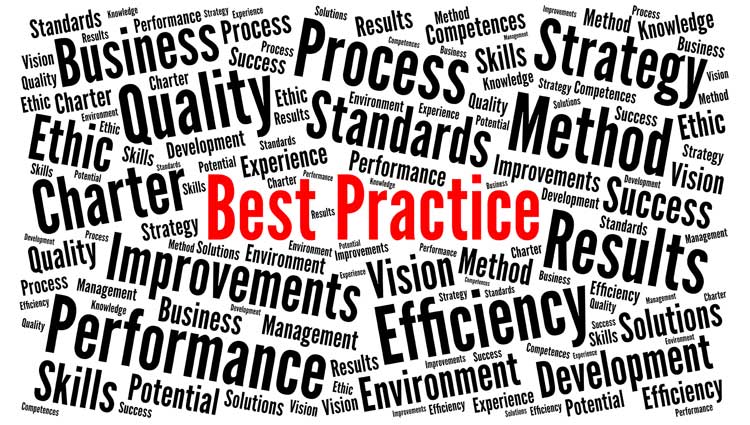
One of the important tasks of a nonprofit is to cultivate major donors. Since organizations are so dependent on receiving donations, fundraising efforts should continually focus on how to cultivate major donors and maintain long-lasting, loyal relationships with them.
While there are all kinds of advice floating around about methods to cultivate major donors, much of it is advanced and focuses on well-established organizations trying to grow already sizeable endowment funds. For organizations in the beginning stages of focusing on large donations, there are certain tried-and-true steps to cultivate major donors.
This is one part of your organization where you don’t want to wing it. You get what you put into fundraising, so paying it the attention it deserves can help your nonprofit reap the financial benefits for years to come.
The very first step is sitting down with the board of directors and establishing goals for the organization. Where do you want to sit financially in a year’s time? What about in 5 years?
Knowing exactly what you are aiming for as a nonprofit, and which services you would like to provide, can help you develop fundraising targets. It is helpful to plan backwards in a situation like this. Look at your ideal financial situation and then carve a path to get there.
Although your board of directors should be able to handle this task, a newly formed board may benefit from some guidance. Don’t be afraid to bring in a financial consultant to help you work through goals that will maximize your revenue.
Once you have goals, it is time to develop a well-constructed plan. Using specific financial targets can help you figure out how many annual gifts you need and the average monetary value of each gift.
It is essential that the board of directors, executive director, and the person in charge of leading fundraising efforts are on the same page and all committed to executing the plan to the best of their ability.
Next, make sure that the person handling your fundraising knows what he or she is doing. While it may be tempting to cut costs and let the executive director take the lead, it is important that it be a dedicated staff member who takes the reins. Fundraising is time-consuming and very client-facing work, and assigning the task to someone who can focus solely on securing donations will provide optimal results. Not making this a priority is the best way to tank your fundraising efforts and spend a lot of money for minimal results.
While an assigned staff member can technically do the job, it is a smart idea to avoid the time and cost associated with conquering the learning curve. Hiring a fundraising officer with experience and proof of proven results is a smart investment. This person will know exactly how to narrow down prospects and build rapport quickly.
If you can’t work a staffed fundraising officer into the budget, you can hire a fundraising consultant. There are plenty of experienced professionals who can be hired to take a look at your data, establish prospective supporters, and help you draft a plan to reach your targets.
Once you have figured out donation targets, a strategy, and who will be in charge, it is time to conduct prospect research. Prospect research is the most important step in cultivating major donors and will determine if you are successful in hitting the donation targets indicated by the board of directors.
It is essential that you target the right people with your marketing efforts to cut costs and speed up the process. Prospect research analyzes wealth markers, an affinity for charitable giving, previous philanthropic behavior, and donor psychology. It is an involved process that may take some time and resources, but it is the only effective way to cultivate major donors.
Once you have conducted prospect research, it is time to narrow down exactly which potential contributors to focus on. Ask for referrals from mutual contacts or reach out in other ways to establish a connection. You can build your relationship further by following the strategic plan formed by the board of directors.
Since donations are the bread and butter of nonprofits, engaging prospective supporters with donor-centric events is a great way to open the doorway to contributions. Once you have begun building a relationship with a donor, a planned fundraising event may be the first time you actually solicit donations.
There are so many different types of events, and choosing the right format will depend entirely on who you are soliciting and the type of organization you run. An organization that supports children’s causes, for example, may choose to hold a kid-friendly event that engages the whole family. If you are targeting a group of prospects who are already tightly connected, you may find that networking or auction events may perform better.
Since the world has drastically turned towards online giving, hosting virtual events is also a feasible, cost-friendly option. Many nonprofits have seen success in using online events or initiatives to cultivate major donors. This is a great way to widen your prospect pool as it removes geographical barriers and anything else that may stand in the way of donors’ physical attendance at an event.
Even if the attendees of your virtual event do not donate at that particular time, you have new leads to conduct prospect research that can lead to future partnerships.
Utilizing donor and marketing data is an effective way to cultivate major donors. Analyzing donation rates, communication rates, and response rates can help you zero in on who continues to be a potential prospect.
Since long-term contributors often tend to have an extensive background within the organization, it is vital to take the relationship-building process step by step. Experienced fundraising officers know that it is a long-term game to cultivate major donors. Continue to read the data, and adjust your methods accordingly.
Every $100 gained in 2017 was offset by $96 dollars worth of expenses. The bottom line is that donors are expensive, and efforts to cultivate new relationships need to be laser targeted in order to maximize the benefit to the organization.
If you notice that the prospect seems interested but isn’t responding to planned giving newsletters, then maybe you need to adjust your marketing strategy. Perhaps this person will respond better to a social media campaign or be more likely to open an e-mail campaign.
Remaining agile in your methods, staying on top of the data, and continually focusing on the cultivation of serious supporters will pay dividends at the end of the day.
Creating a plan to cultivate major donors is your first step on the way to creating lasting relationships that turn into planned giving. Since growing an endowment is the end goal for many organizations, finding a balance between annual and planned donations is the key to maximizing financial assets.
An ongoing process to cultivate major donors will encourage a continuous flow of donations at different levels. As new supporters begin to give annual gifts, you can work on transitioning long-term contributors to planned donations.
Ensuring that you have hired the right person for the job and are working on actionable, strategic goals in a way that matches your prospects is the key to creating loyal supporters.

Hands-on, in-the-trenches experience designed to equip you with strategies and skills for success. Choose the one that fits your goals—or take both for maximum results. It’s intense, effective, and built for leaders like you.
Related
Educate donors and build instant credibility, authority and trust with our planned giving micro website.
800.490-7090
484.680.7800 local
Succeed@MajorGifts.com
Stay Informed!
Webinars, free downloads, tax law changes, more. Subscribe today. You can unsubscribe at anytime.
Copyright 2024 © PlannedGiving.Com
Stay informed with timely news. You can unsubscribe at any time.
Success List